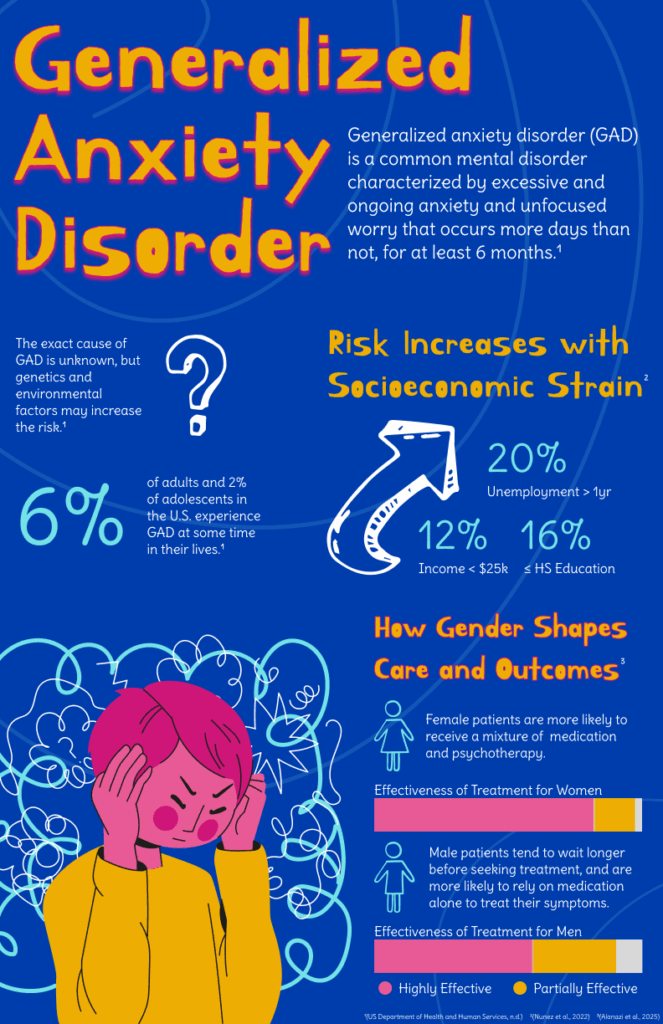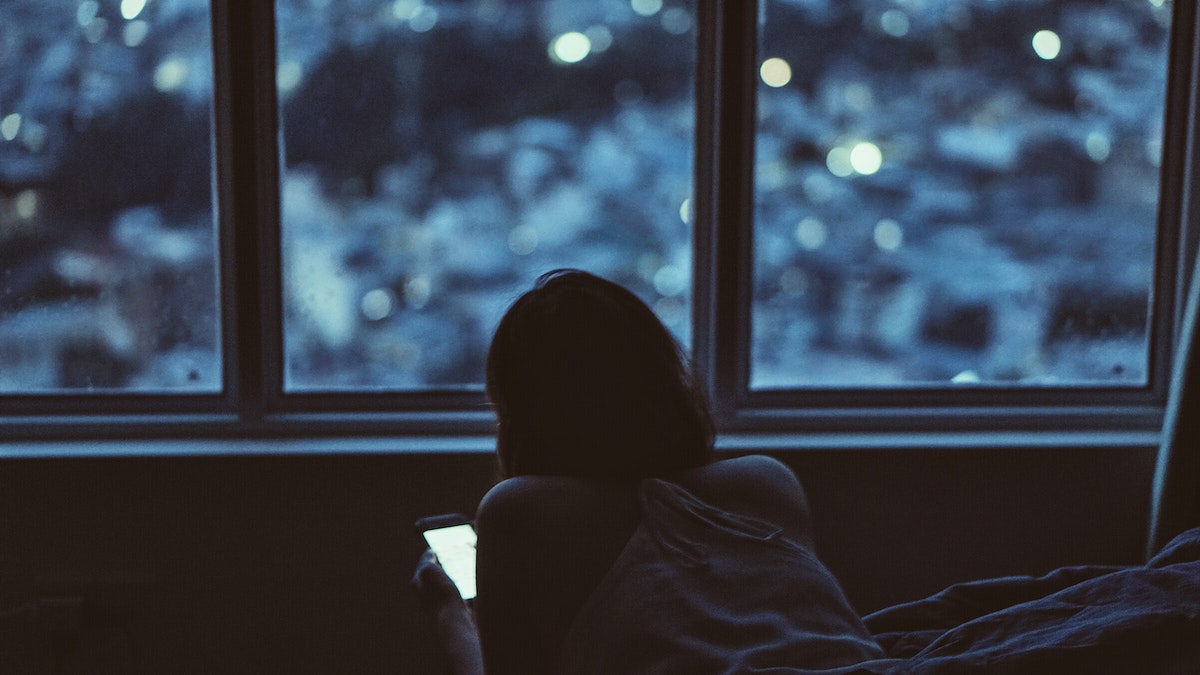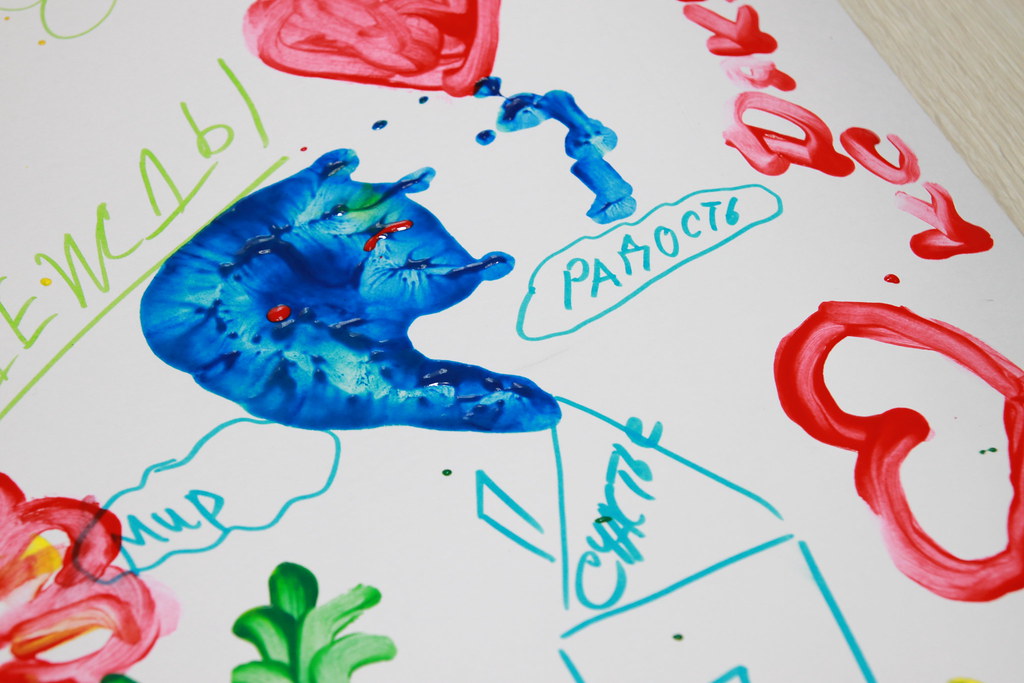In March 2020, the world was irrevocably altered when the World Health Organization declared a global pandemic stemming from the outbreak of the COVID-19 virus. Nations scrambled to enact broad community mitigation strategies, a necessary but disruptive measure that included nationwide stay-at-home orders for all non-essential workers across the United States. These unprecedented directives confined millions to their homes, while simultaneously thrusting essential workers into high-risk environments, setting the stage for profound social and psychological consequences that would resonate deeply across the population.
As the intricate, multi-faceted disruptions of daily life unfolded, the collective mental health and well-being of the populace began to erode at an alarming rate. Yet, the impact of these cascading societal catastrophes was far from uniform, with various age groups experiencing differing levels of psychological distress. Traumatic stressor events, such as pandemics and epidemics, have a documented history of evoking fear, confusion, and uncertainty, contributing significantly to the onset of psychopathology and mental health disorders. The COVID-19 pandemic proved to be no exception, fostering an environment ripe for psychological challenges.
Indeed, the initial period of the COVID-19 pandemic revealed a particularly concerning trend: younger generational cohorts, specifically Gen Z (born 1997–2012) and Millennials (born 1981–1996), rated significantly worse on a host of mental health indices. This included elevated rates of major depression, generalized anxiety disorder, perceived stress, loneliness, compromised quality of life, and profound fatigue. While older adults faced higher risks for severe physical illness from the virus, the psychological burden, it appears, was disproportionately shouldered by the youth, exposing a critical area of vulnerability within our society that demands closer scrutiny and understanding.

1. **Elevated Rates of Major Depressive Disorder (MDD)**The onset of the COVID-19 pandemic saw a stark and significant increase in the prevalence of Major Depressive Disorder (MDD) among younger generations, far exceeding pre-pandemic estimates. Provisional diagnoses indicated that a staggering 44.5% of individuals in the Gen Z group and 35.8% in the Millennial group met the criteria for MDD. These figures represent a dramatic leap compared to their older counterparts, with Gen X reporting 19.2% and Baby Boomers 11.8%.
This differential impact is not merely a statistical anomaly but reflects a profound psychological burden. The rates observed in Gen Z and Millennials significantly surpassed the 12-month general prevalence estimate of 10.4% prior to the pandemic, highlighting the acute and unprecedented nature of the distress. For these younger cohorts, the pandemic served as an overwhelming traumatic stressor, fostering an environment where depressive symptoms could flourish.
Depression, in this context, can be seen as a direct consequence of the widespread uncertainty, the disruption of established routines, and the pervasive sense of loss—whether of social connections, educational opportunities, or nascent career paths. The data unequivocally points to a generation grappling with a level of despair that warrants immediate attention, underscoring their particular vulnerability during this global crisis and the urgent need for targeted mental health interventions.

2. **Increased Prevalence of Generalized Anxiety Disorder (GAD)**Beyond the shadows of depression, a pervasive sense of anxiety also gripped the younger populations, with Generalized Anxiety Disorder (GAD) manifesting at significantly higher rates. The study’s findings reveal provisional diagnoses of GAD affecting 30.9% of Gen Z individuals, 27.9% of Millennials, and 17.2% of Gen Xers. Comparatively, the Baby Boomer group experienced a notably lower rate of 8.1%, further emphasizing the generational disparity.
These prevalence rates far outstripped the typical 12-month general prevalence of GAD in the U.S., which generally ranges between 2% and 4% prior to the pandemic. The heightened anxiety can be attributed to the constant deluge of information and misinformation, the fear of contagion for oneself or loved ones, and the overwhelming uncertainty regarding susceptibility, transmission, and treatment of the novel virus. The very fabric of daily life was interwoven with stressors that fueled a persistent state of apprehension.
The pandemic’s swift progression and the ensuing mitigation efforts created a climate of chronic worry, making it difficult for many to manage their daily concerns without developing clinical anxiety. The results suggest that the younger age groups, still in formative stages of their lives, were less equipped to handle the emotional turbulence of such an unprecedented global event, leading to a palpable increase in their anxiety levels and a significant public health concern.

3. **Heightened Perceived Stress Levels**Perceived stress, a subjective measure of the degree to which situations in one’s life are appraised as stressful, also saw a marked elevation among younger cohorts. The study indicates that individuals in the Gen Z and Millennial groups consistently self-reported more negative outcomes for perceived stress, reflecting a greater sense of being overwhelmed by life’s demands during the pandemic’s initial phase. This was measured by instruments like the Perceived Stress Scale, which probes how often individuals felt unable to cope with their responsibilities.
The complex, multi-faceted disruptions introduced by the pandemic created an environment of continuous strain. Routines were shattered, social support networks were fractured, and traditional coping resources became less accessible. For younger generations navigating academic pressures, entering the workforce, or establishing their independence, these disruptions compounded existing stressors, making the experience of daily life far more arduous.
The perpetual state of flux, combined with the underlying fear of the virus and its economic repercussions, meant that many younger individuals found themselves in a constant battle to maintain a semblance of control. Their higher perceived stress levels underscore a widespread struggle to adapt to the new normal, highlighting a crucial area where support systems failed to adequately buffer the psychological impact of the crisis.
Read more about: Orthorexia: Understanding the Unhealthy Obsession with ‘Healthy’ Eating and How to Find Balance

4. **Profound Feelings of Loneliness**The mandatory stay-at-home orders and widespread social distancing measures, while critical for public health, inadvertently fostered an environment conducive to widespread social isolation and, consequently, profound feelings of loneliness. Consistent with the overall trend, Gen Z and Millennials self-reported significantly higher levels of loneliness compared to their older counterparts, an outcome measured by the UCLA Loneliness Scale, which assesses subjective feelings of social isolation.
For younger individuals, whose developmental stages often involve extensive social interaction, peer connection, and the exploration of identity within group settings, the sudden imposition of isolation proved particularly devastating. The absence of regular social gatherings, educational environments, and nascent professional networking severely impacted their ability to maintain existing social ties and forge new ones, critical components of well-being for these age groups.
Empirical research consistently links social isolation and loneliness to psychological distress, forming a vicious cycle where isolation exacerbates mental health symptoms, which in turn can make it harder to seek connection. The data thus paints a picture of younger generations feeling profoundly “left out” and disconnected, a silent crisis unfolding alongside the public health emergency, and contributing significantly to their overall psychological vulnerability.
Read more about: A Life of Laughs and Silent Battles: Revisiting Robin Williams’ Enduring Legacy and the Unseen Struggles He Faced

5. **Diminished Psychological Quality of Life**Quality of life, particularly in its psychological dimension, also suffered disproportionately among the younger generational groups during the initial period of the pandemic. Gen Z and Millennials reported significantly worse outcomes regarding their psychological quality of life, as assessed by the World Health Organizational Quality of Life (WHOQOL-BREF) scale. This measure evaluates an individual’s perception of their quality of life across several domains, including psychological health.
This decline in psychological well-being is intrinsically linked to the cascade of mental health symptoms experienced by these cohorts. When individuals are battling higher rates of depression, anxiety, perceived stress, and loneliness, their overall perception of their mental and emotional state, and thus their psychological quality of life, inevitably deteriorates. The internal struggle becomes a constant companion, coloring every aspect of their subjective experience.
The environment subscale of the WHOQOL-BREF also indicated worse outcomes for younger generations, suggesting that their living situations and broader societal context during the pandemic further contributed to their diminished well-being. This multifaceted erosion of mental health, coupled with external pressures, resulted in a significant reduction in the perceived richness and satisfaction of their lives, highlighting a comprehensive impact on their overall state of being.
Read more about: The Digital Hypnosis: How Social Media Algorithms Are Secretly Rewiring Your Brain for Compulsive Consumption

6. **Experiencing Greater Personal Distress**Empathy, too, presented a nuanced picture of generational differences during the pandemic. While the Empathic Concern subscale of the Interpersonal Reactivity Index (IRI) showed no significant generational differences, the Personal Distress subscale revealed that Gen Z and Millennials reported more negative outcomes. This subscale specifically measures feelings of apprehension and anxiety experienced in stressful settings, offering a window into their emotional reactivity to the crisis.
This heightened personal distress in younger generations speaks to their specific vulnerability in confronting the overwhelming and often traumatic events of the pandemic. They likely experienced a greater sense of being personally threatened or overwhelmed by the collective trauma, manifesting as increased apprehension and anxiety when faced with the suffering of others or the broader societal crisis. Their internal resources for managing such intense emotional responses appeared to be stretched thin.
The pandemic, as a large-scale traumatic event, set the stage for collective trauma, yet the research suggests that not all generational groups experience its mental health impacts proportionately. The elevated personal distress among Gen Z and Millennials underscores their heightened emotional sensitivity and perhaps a lack of established coping mechanisms or life experiences that might have buffered older cohorts from such intense reactions, making them more susceptible to its psychological fallout.
7. **Pervasive Fatigue and Exhaustion**Perhaps less discussed but equally critical to understanding the generational mental health disparity is the pervasive fatigue and exhaustion reported by younger cohorts. Across all subscales of the Checklist of Individual Strength (CIS)—which measures fatigue, motivation, physical activity, and concentration—individuals in the Gen Z and Millennial groups consistently self-reported more negative outcomes. The fatigue subscale, in particular, indicated significantly higher levels of exhaustion among these younger individuals.
This profound fatigue is not merely physical tiredness but a deep-seated mental and emotional exhaustion, often a hallmark symptom of chronic stress, anxiety, and depression. The constant vigilance, the relentless processing of distressing news, and the effort required to navigate a disrupted world likely took an immense toll on their energy reserves. The cumulative effect of sustained psychological distress can manifest as a pervasive lack of vitality and an inability to recover through normal rest.
The reliable assessment of general fatigue through the CIS highlights a significant functional impairment for Gen Z and Millennials. It underscores that beyond specific diagnoses, the sheer energetic cost of living through the initial pandemic period was far greater for these groups, pointing to a state of chronic overburdening that impacted their very capacity to function and thrive. This exhaustion represents a silent yet powerful indicator of their struggle to cope with the unprecedented demands of the crisis.
As the initial psychological symptoms unfolded, the pandemic’s broader societal ramifications manifested in distinct behavioral responses, functional impacts, and specific concerns that further compounded the mental health challenges for younger generations. These were not merely abstract anxieties but tangible pressures that shaped daily life and coping mechanisms, revealing yet another layer of vulnerability for Gen Z and Millennials as they navigated an unprecedented global crisis. The interplay of these factors created a complex web of stressors, influencing their well-being in profound ways distinct from their older counterparts.
Our comprehensive analysis extends beyond direct diagnostic rates to explore the lived experiences and adaptive strategies, or lack thereof, adopted by these cohorts. Understanding these nuances is crucial for developing targeted public health initiatives that acknowledge the multifaceted nature of pandemic-induced trauma and its differential impact across the generational spectrum. This deeper dive into behavioral shifts and specific concerns paints a more complete picture of the ‘silent pandemic’ within the pandemic.
Read more about: 12 SUVs to Steer Clear Of: Critical Insights into Models That Age Poorly and Rack Up Repair Bills

8. **Increased Concerns Over Employment and Finances**The economic upheaval triggered by the COVID-19 pandemic proved to be a significant and differential stressor, particularly for Millennials and Gen Xers. While all generations faced some degree of financial uncertainty, data revealed that these middle generations expressed significantly higher rates of concern regarding employment stability and personal finances compared to both Gen Z and Baby Boomer groups. This is a critical distinction, as these cohorts are often in peak career-building phases, responsible for mortgages, and supporting young families.
The closure of businesses, widespread layoffs, and furloughs meant that millions faced unemployment or severe income reduction, magnifying psychological distress and anxiety. For Millennials, many of whom were still recovering from the 2008 financial crisis, the pandemic represented a second major economic blow, potentially delaying long-term financial goals and exacerbating pre-existing anxieties about economic security. The persistent worry about maintaining livelihoods under such volatile conditions undeniably contributed to their overall mental health burden.
This concern is not merely about personal wealth but about fundamental security and the ability to provide, a core human need. The constant news cycles detailing economic downturns and the precarity of the job market created an environment of chronic stress, feeding into the higher rates of anxiety and depression observed within these generational cohorts. The intertwining of economic stability with mental well-being became starkly evident during this period.
Read more about: The Great American Economic Divide: Unpacking Public Frustration Amidst Official Growth Claims

9. **Heightened Concerns Regarding Children’s Care and Schooling**For Millennials and Gen Xers, many of whom are in the throes of parenthood, the pandemic introduced an unparalleled set of challenges related to childcare and schooling. These generational groups reported significantly higher concerns regarding their children compared to Gen Z, many of whom are pre-parental, and Baby Boomers, whose children are typically grown. The sudden shift to remote learning, the closure of daycares, and the uncertainty surrounding educational continuity placed immense pressure on parents.
Juggling professional responsibilities with full-time childcare and impromptu homeschooling became a daily ordeal, blurring the lines between work and family life. This relentless demand often led to burnout, increased stress, and a pervasive sense of being overwhelmed. The absence of traditional support systems, coupled with the fear of their children contracting the virus or falling behind academically, created a fertile ground for psychological distress.
The emotional toll of managing their children’s anxieties and disrupted social lives further added to their burden. This particular concern highlights a unique functional impact on these generations, as the responsibilities of caregiving were magnified to an unprecedented degree. The struggle to maintain a semblance of normalcy for their families while navigating their own anxieties became a defining characteristic of their pandemic experience.
Read more about: The Remarkable Journey of Childhood: How Our Understanding of ‘Kids’ Has Made a Brilliant Comeback

10. **Elevated Concerns for Elderly Parents**The care and well-being of elderly parents emerged as another significant area of concern, disproportionately affecting Millennials and Gen Xers. These cohorts found themselves navigating the dual anxiety of protecting their vulnerable older relatives from the virus while simultaneously dealing with their own immediate family and professional demands. The logistical complexities of caring for or even just being unable to visit aging parents during lockdown periods weighed heavily.
Fear of unknowingly transmitting the virus, coupled with concerns about access to necessary care or the emotional impact of isolation on their parents, added a profound layer of stress. For many, this meant becoming remote caregivers, coordinating medical appointments, and ensuring supplies, often from a distance or with restricted contact. This ‘sandwich generation’ found itself stretched thin, bearing the emotional and practical load of multiple generations.
This particular stressor underscores the complex intergenerational dynamics exacerbated by the pandemic. The inability to physically be with or adequately monitor their elderly parents contributed to feelings of helplessness and guilt, which are potent drivers of psychological distress. The data clearly shows that this aspect of the crisis resonated more deeply with those in middle adulthood, highlighting their unique position in the familial structure.
Read more about: America’s Housing Conundrum: A Deep Dive into the Systemic Roots of Unaffordability and the Fading Dream of Homeownership
11. **Significant Decreases in Sleep Duration**The pervasive disruption of daily routines, coupled with heightened anxiety, had a tangible impact on sleep patterns across the board, but particularly for younger generations. Forty to fifty percent of individuals in the Gen Z, Millennial, and Gen X groups reported decreases in sleep duration during the initial phase of the pandemic. This marked a significant departure from the more stable sleep patterns reported by Baby Boomers, underscoring a generational vulnerability to sleep disturbances.
For Gen Z, this trend was particularly concerning, as research indicated they were already prone to decreased sleep duration before the pandemic, often attributed to increased electronic media use. The pandemic’s stressors only exacerbated this pre-existing condition, creating a vicious cycle where anxiety fueled sleeplessness, which in turn worsened mental health. Quality sleep is intrinsically linked to psychological well-being, making this decline a critical indicator of deteriorating mental states.
The constant vigilance, the influx of distressing news, and the lack of clear boundaries between work, education, and home life contributed to a state of chronic activation that made restful sleep elusive. This widespread reduction in sleep duration represents a significant functional impact, impairing concentration, motivation, and overall capacity to cope with the daily demands of a pandemic-stricken world.
Read more about: Beyond the Scale: How One Woman’s Journey and Proven Strategies Can Transform Your Body and Mind

12. **Increase in Alcohol Consumption as a Coping Mechanism**In a clear shift towards maladaptive coping behaviors, younger generations significantly increased their alcohol consumption during the initial pandemic period. A notable 48.5% of Gen Z and 52.2% of Millennials who previously consumed alcohol reported an increase in their use, starkly contrasting with the 19.3% increase seen in the Baby Boomer group. This finding is particularly striking for Gen Z, a cohort previously characterized by lower rates of alcohol use and a tendency towards abstinence compared to other birth cohorts.
The dramatic reversal in Gen Z’s alcohol consumption patterns suggests a direct response to the traumatic stressor events of the pandemic. For many, alcohol became a readily accessible, albeit ultimately unhelpful, mechanism to manage overwhelming stress, anxiety, and feelings of isolation. This highlights a critical public health concern, as relying on substances for emotional regulation can quickly lead to dependence and further exacerbation of mental health issues.
This increase in maladaptive coping aligns with broader research suggesting that younger adults, lacking the accumulated wisdom and established coping strategies of older generations, are more susceptible to engaging in risky behaviors under duress. The pandemic, in essence, provided a fertile ground for these vulnerabilities to manifest, creating a trajectory of increased substance use that warranted immediate attention and intervention.
Read more about: Jansen Panettiere’s Untimely Passing: Family Discloses Heart Complications as Official Cause of Death

13. **Increased Reliance on Sleep Aids**Compounding the issues of decreased sleep, younger generations also showed a significantly higher reliance on sleep aids as a coping mechanism during the pandemic. An astonishing 63.9% of Gen Z and 62.9% of Millennials who used sleep aids reported an increase in their use. These figures dramatically outpace the 47.7% for Gen X and a mere 25.1% for Baby Boomers, illustrating a clear generational disparity in the struggle for restful sleep.
This heightened dependence on sleep aids underscores the severity of sleep disturbances experienced by younger cohorts. When natural sleep eludes them, individuals often turn to pharmacological solutions, signaling a desperate attempt to find relief from chronic insomnia or disrupted sleep cycles. It represents another form of self-medication, a behavioral response to an acute and prolonged period of psychological distress.
The long-term implications of increased sleep aid use, particularly without medical supervision, can be significant, potentially leading to dependence and masking underlying mental health issues. This trend serves as a powerful indicator of the profound functional impact of the pandemic on the well-being of Gen Z and Millennials, highlighting their intense struggle to maintain basic physiological and psychological equilibrium.

14. **Disproportionate Unemployment Among Millennials**The economic fallout of the pandemic had a particularly sharp and disproportionate impact on the employment status of Millennials. While all generations faced employment shifts, Millennials reported the highest proportion of unemployment, both attributed to the pandemic and not attributed to the pandemic. This demographic vulnerability placed an immense socio-economic pressure on a generation that is typically in crucial stages of career development, homeownership, and family formation.
Millennials, many of whom entered the workforce during challenging economic times, found their nascent careers and financial stability once again imperiled. The loss of employment not only translated into immediate financial hardship but also eroded self-esteem, created a sense of professional stagnation, and intensified anxieties about future prospects. This economic precarity fed directly into the observed increases in depression and anxiety.
This specific functional impact underscores how broader societal crises can disproportionately affect certain demographic segments, based on their life stage and economic position. The struggle for steady employment, even prior to the pandemic, had already shaped the Millennial experience; the COVID-19 era merely amplified these existing vulnerabilities, making them a particularly psychologically susceptible population.
Read more about: America’s Housing Conundrum: A Deep Dive into the Systemic Roots of Unaffordability and the Fading Dream of Homeownership
The intricate tapestry of pandemic-related challenges reveals a compelling narrative of generational divergence, where younger cohorts bore a disproportionately heavy psychological and behavioral burden. The initial period of the COVID-19 crisis, with its unprecedented disruptions and uncertainties, exposed critical vulnerabilities within Gen Z and Millennial populations. From the acute onset of depression and anxiety to the shifts in coping mechanisms like increased substance use and reliance on sleep aids, the data consistently points to a generation struggling profoundly. The added layers of socio-economic pressures, such as unemployment for Millennials and concerns over family care, further illustrate the complex, multi-faceted nature of their distress. Recognizing these specific impacts is not merely an academic exercise; it is an urgent call to action for public health initiatives to improve access to targeted mental health resources, ensuring that the ‘silent pandemic’ does not leave lasting scars on the well-being of our future generations.



